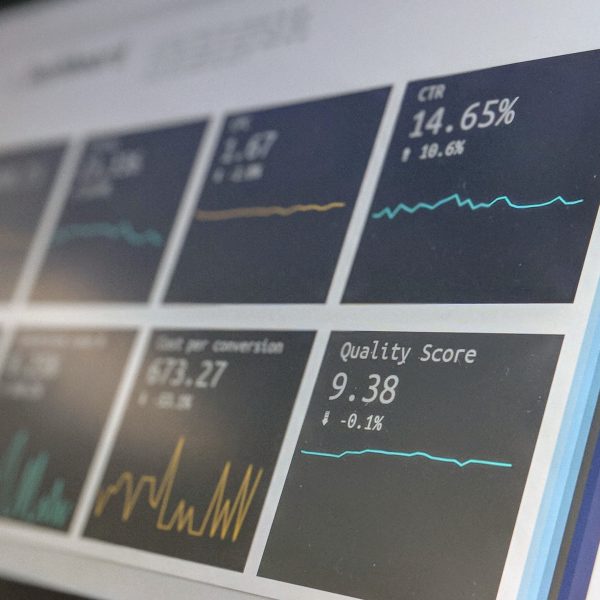CCS paid surges 26.2% and LDC growth continues in Q2

The total amount of Child Care Subsidy (CCS) paid to families in the three months ended June 2019 surged by 26.2 per cent compared to the same period last year according to the Federal Department of Education’s latest Child Care in Australia report.
The report, which is issued quarterly and aims to capture the key trends in play across the early childhood education and care (ECEC) sector, also confirmed that attendance in long day care (LDC) settings measured by child and by hour and the number of children accessing additional child care subsidy (ACCS) moved higher in the period.
Notably, the release of the latest report is substantially sooner than historic releases, some of which were published nine months after the end of the reporting period in question. This step change in release timetable is consistent with Department intentions and provides a more current, and therefore valuable, snapshot of conditions in the sector.
Total Child Care Subsidy paid soars as hole left by Child Care Rebate filled
A total of $1.96 billion of Child Care Subsidy was paid in the three months to June 2019, up from $1.55 billion paid in the same period last year under the old subsidy regime, an increase of 26.2 per cent.
The increase is largely a function of the different calculation methodologies applied to the two subsidy regimes, with the current regime, CCS, calculated via a combination of means and activity testing and the old regime which consisted of two subsidy streams, the Child Care Benefit (CCB) which was means tested and the Child Care Rebate (CCR) which was a fixed dollar amount.
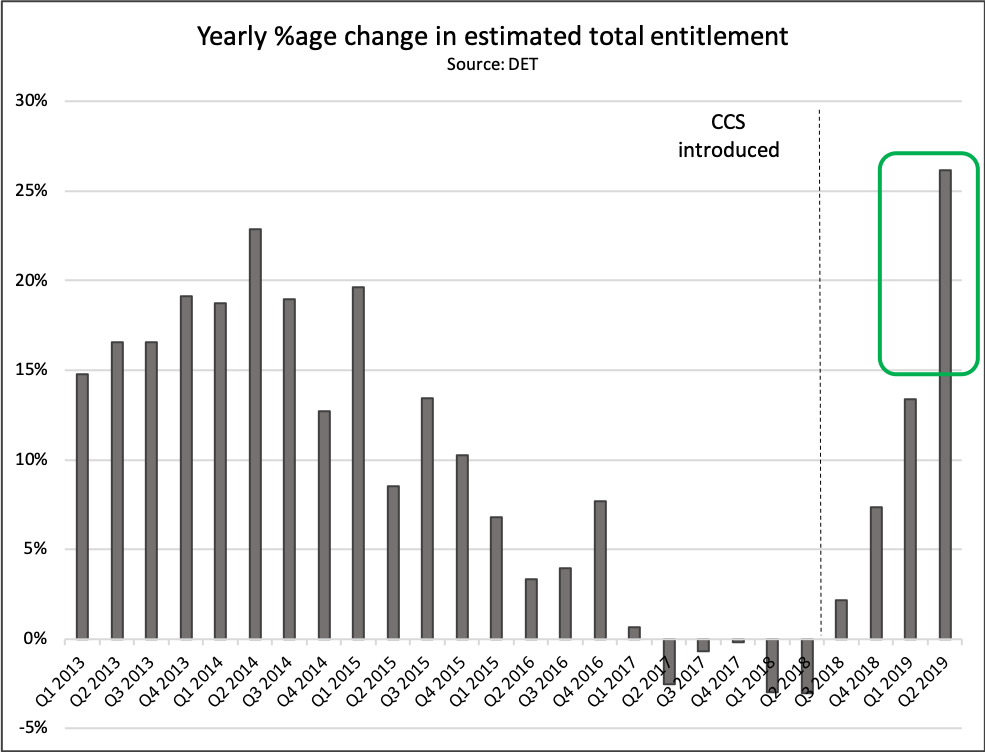
The fixed dollar component of the old subsidy, the CCR, meant that as fees rose the number of days of care that could be accessed by a family decreased over time, meaning families found themselves exhausting their CCR allocations earlier and earlier in the year.
This dynamic introduced a seasonality to Government disbursements which saw amounts drawn taper off as the financial year ended and which is not present in the current subsidy system.
Overall CCS paid since its introduction have averaged around $1.92 billion per quarter compared to $1.72 billion in FY 2017-18 and $1.75 billion in FY 2016-17.
LDC records second consecutive quarter of above 6.0% growth with VIC leading
The number of children enrolled at long day care centres across Australia rose by 6.3 per cent compared to the same period last year with a total of 738,410 children attending.
It was the second consecutive quarter of 6.3 per cent growth recorded and the fourth consecutive quarter of growth above 4.0 per cent which in both cases were on average substantially higher than those recorded prior to the introduction of the CCS in July 2018.
Across the key states and territories of Australia the stand out from an LDC perspective was Victoria which saw a 10.0 per cent increase in enrollments in the quarter up from 9.3 per cent in the quarter before.
Victoria’s attendance growth was materially higher than the other larger states with NSW coming at 4.3 per cent and Queensland at 3.6 per cent.
It is unclear what has driven the Victoria increases although CCR elimination and strong migration trends are likely to be key contributors.
Outside school hours care (OSHC) attendance reported a solid 4.3 per cent increase in the quarter which followed on from a very strong 11.7 per cent rise in the previous quarter. Family day care saw the lowest level of enrolments since June 2011, although signs of stabilisation in enrolments in this setting are appearing.
Weekly hours of LDC attended still higher than last year, OSHC growing too
The number of hours that families are enrolling their children into LDC services continued to exhibit growth year on year, a trend that started post the introduction of the CCS and reflects families taking “more days” in response affordability improvements.
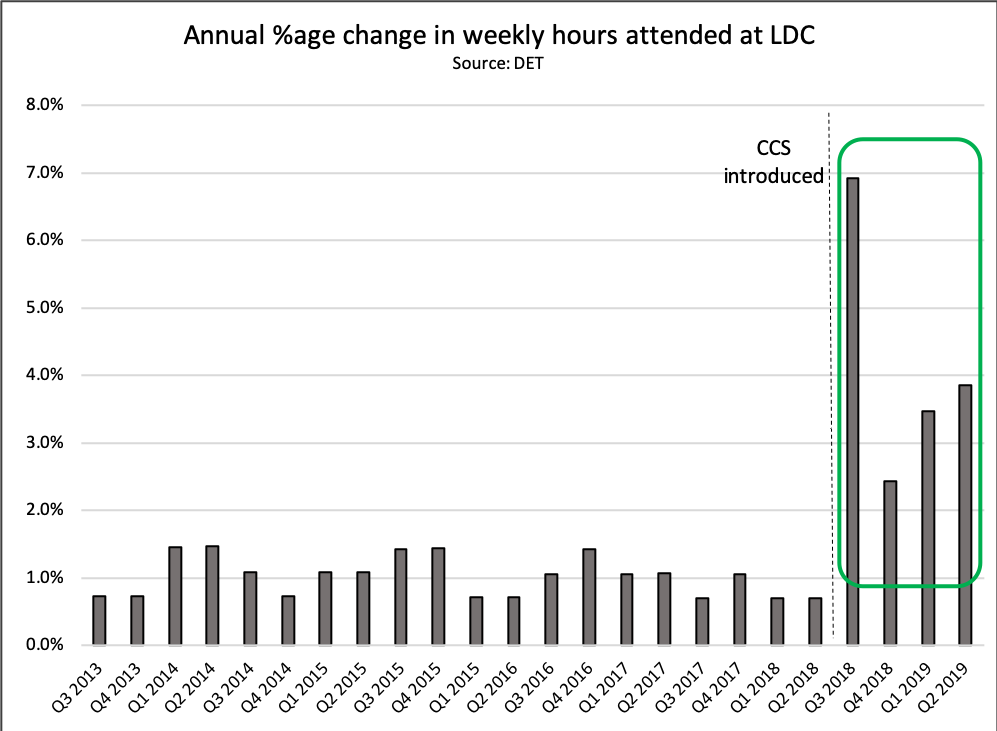
Although the trend is not quite is clear in OSHC settings it is notable that there have now been four consecutive quarters of year on year increases in weekly hours of OSHC attended compared to an increase in 12 of the 29 quarterly periods prior to July 2018.
Family day care hours attended continues to contract in line with enrolments in this setting.
ACCS rises again driven by child well being although still short of best pre CCS levels
The number of children and families accessing ACCS showed another rise in the three months ended June 2019 with 31,270 children and 21,320 families receiving the subsidy.
These levels are still substantially lower than those recorded in the June quarter of 2016 and 2017 but a slight improvement on the same period last year.
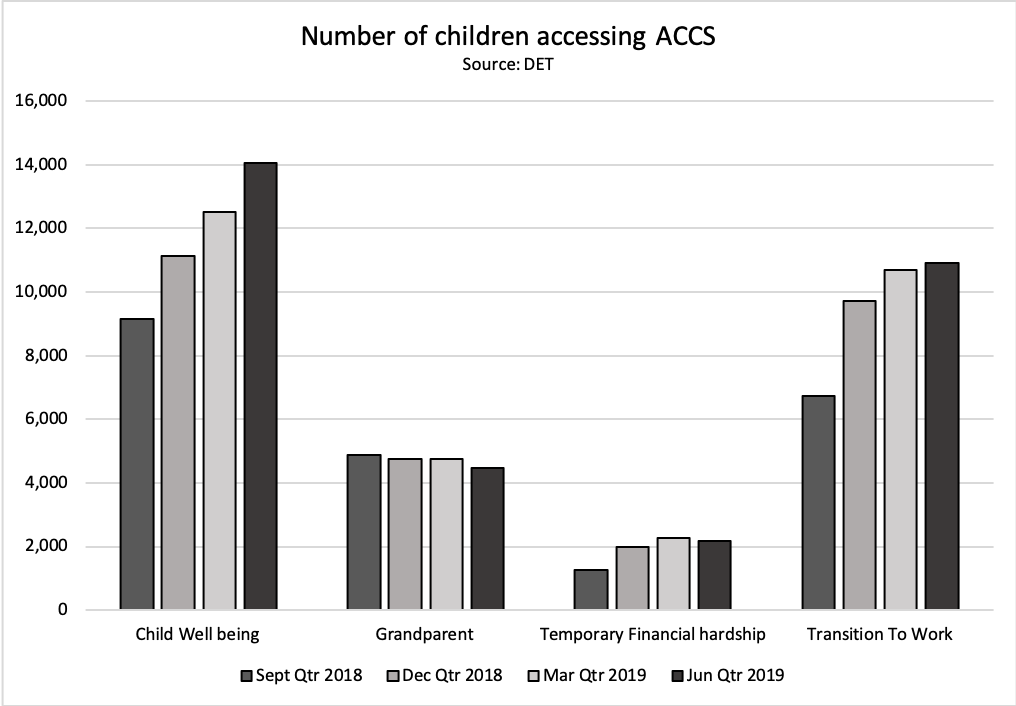
The key driver in this period has been in the child well being category with 14,070 children receiving ACCS in the period. Small gains were recorded in the transition to work category and small declines in the grandparent and temporary financial hardship categories.
Cost of care rises in LDC remain anchored around the 4.0 per cent mark
The average hourly costs of care in LDC settings rose to $10.0, an increase of 0.5 per cent on the previous quarter and 4.2 per cent on the same period last year.
The increase is the lowest since the introduction of the CCS and falls in the middle of the 3.0 per cent to 5.0 per cent range that has been in place since the beginning of 2017.
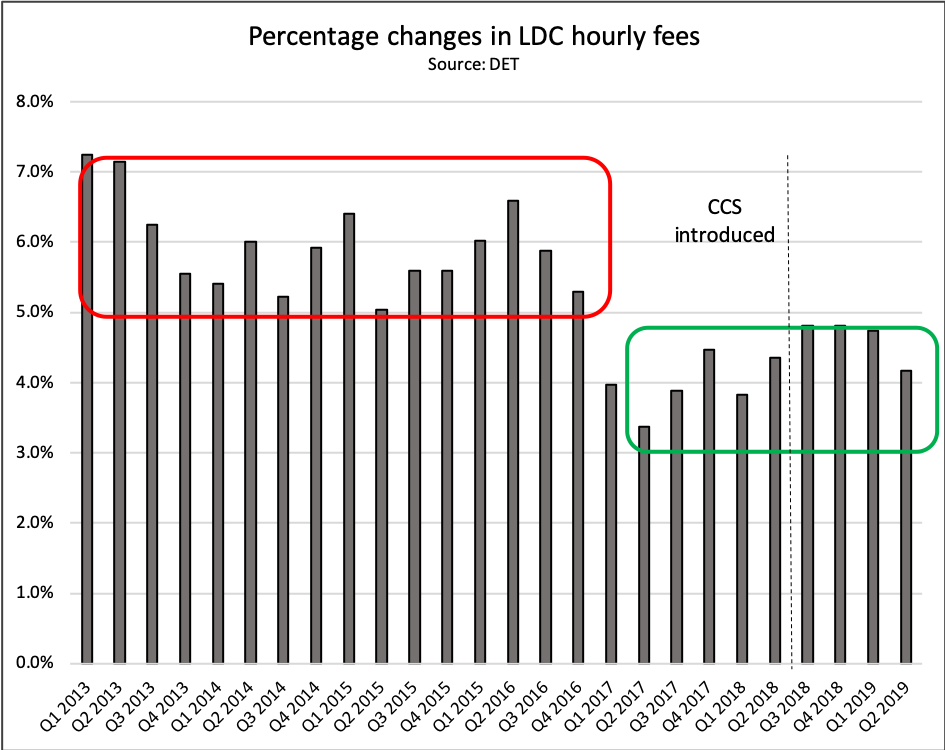
Notably, the percentage of LDC services reporting fees above the fee cap of $11.77 crept higher to 13 per cent compared to 12 per cent in the three months to March 2019 and 11 per cent in the three months to December 2018.
Although a far more volatile series, OSHC fee increases in the last three quarters have been muted at below 1.4 per cent, which compares very favourably to years before the introduction of the CCS which saw average increases of around 4.4 per cent.
Popular

Economics
Early childhood education assets continue to attract strong investor interest in record-breaking $151m Burgess Rawson from CBRE auction
2025-12-16 08:00:10
by Fiona Alston

Economics
Provider
What early childhood providers need to know about mandatory merger clearance in 2026
2025-12-17 06:30:05
by Fiona Alston













